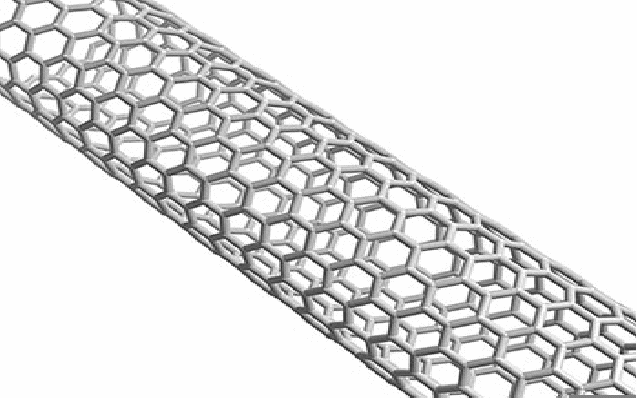Carbon nanotubes are long cylindrical carbon molecules, allotropes of carbon with a cylindrical nanostructure.

Nanotubes have been constructed with length-to-diameter ratio of up to 132,000,000:1, significantly larger than any other material. These cylindrical carbon molecules have novel properties that make them potentially useful in many applications electronics, optics, medicine and other fields of materials science, They exhibit extraordinary strength and unique electrical properties, and are efficient thermal conductors.
The ends of a nanotube might be capped with a hemisphere of the buckyball structure. The diameter of a nanotube is on the order of a few nanometres (approximately 1/50,000th of the width of a human hair), while they can be tens of centimeters at least in length.
Carbon nanotubes are the strongest and stiffest materials yet discovered in terms of tensile strength and elastic modulus respectively. In 2000, a multi-walled carbon nanotube was tested to have a tensile strength of 63 gigapascals (GPa). Since carbon nanotubes have a low density for a solid of![]() its specific strength of up to
its specific strength of up to![]() is the best of known materials, compared to high-carbon steel's
is the best of known materials, compared to high-carbon steel's![]()
Under excessive tensile strain, the tubes will undergo plastic deformation, which means the deformation is permanent. This deformation begins at strains of approximately 5% and can increase the maximum strain the tubes undergo before fracture by releasing strain energy.
CNTs are not nearly as strong under compression. Because of their hollow structure and high aspect ratio, they tend to undergo buckling when placed under compressive, torsional or bending stress.
